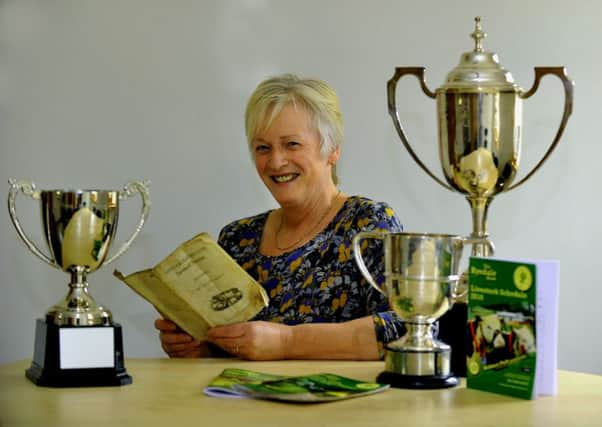150 years of Ryedale showstopper


Christine took over as general secretary of the show in 2015 after years of serving on the show committee and being livestock secretary and with such a milestone being reached she was keen to look back on its past. It has led to a special 12-page commemorative brochure being printed detailing events and anecdotes that will be available on show day.
“The very first show took place in 1855 and we managed to locate the show catalogue. It will be on display in our memorabilia marquee run by the Ryedale Folk Museum. What is particularly noticeable is that the same family names such as Waind mentioned in that first catalogue are still showing livestock today.
Advertisement
Hide AdAdvertisement
Hide Ad“We also have minutes from the show committee meetings through the years and 1875 seems to have been a big turning point for the show. Prior to that it had been failing financially and Lord Feversham of Duncombe Park had to bail it out of a mess around 1870. The upturn came about when the three main towns of Kirkbymoorside, Pickering and Helmsley were connected by rail. The show never faltered after that and is in a strong position today.
“There have always been little controversies along the way and we picked up on a story whereby one horse was deemed not fit to win the trophy because it hadn’t travelled or hunted in the county.”
The venue for the first 100 years of Ryedale Show rotated between the three major towns in the area with the centenary show held at Welburn Park in 1964.
“It was in 1965 that saw Welburn Park become the permanent venue and this year not only sees the 150th show but also the 50th to be held there. We are very grateful to Johnny Shaw for allowing us the use of the family’s grounds each year. It has to be one of the county’s most iconic showgrounds with the tradestands and marquees on an upper level and with the sloping grassy bank providing an amphitheatre-style view of the cattle, sheep, pigs, goats and horses below.”
Advertisement
Hide AdAdvertisement
Hide AdThe first show brochure highlights a cattle class that seems to have completed a major turn around a century and a half on. The Beef Shorthorn breed was one of the biggest classes and at this year’s Great Yorkshire Show the breed was second only on pedigree cattle entries to the Aberdeen Angus. Show entries are all on the up at Ryedale with 207 cattle entries of which once again the Beef Shorthorn is prominent.
“We’re also seeing a noticeable increase on dairy cow entries which is encouraging given the number of dairy farmers who have left the industry and our sheep entries have hit a phenomenal 1,112. We’ve never beaten the 1,100 before in all the time I’ve been involved with the show.”
One important and yet often overlooked section of agricultural shows are the produce classes. These are run by Appleton-le-Moors based Malcolm Leckenby and while the entries here are also well up there is one that particularly tickles Christine.
“Malcolm has a novelty class this year called ‘My Favourite Tea Towel’. It has 28 entries! The produce classes have hit over 2,000 entries. That’s just amazing.”
Advertisement
Hide AdAdvertisement
Hide AdChristine farms with husband David at their 300-acre Reagarth Farm near Helmsley that includes cereal crops, a flock of 400 Lleyn breeding ewes and a dozen British Blonde and Limousin suckler cows. She ran a farm secretarial company from the farm until selling it in 2012 and has shown both cattle and sheep at shows throughout Yorkshire.
“We had up to 50 suckler cows at one time and I enjoyed showing. The best I ever did was getting Reserve Interbreed Junior Champion at Newark with a Limousin heifer but the cattle are now becoming more of a hobby for me.